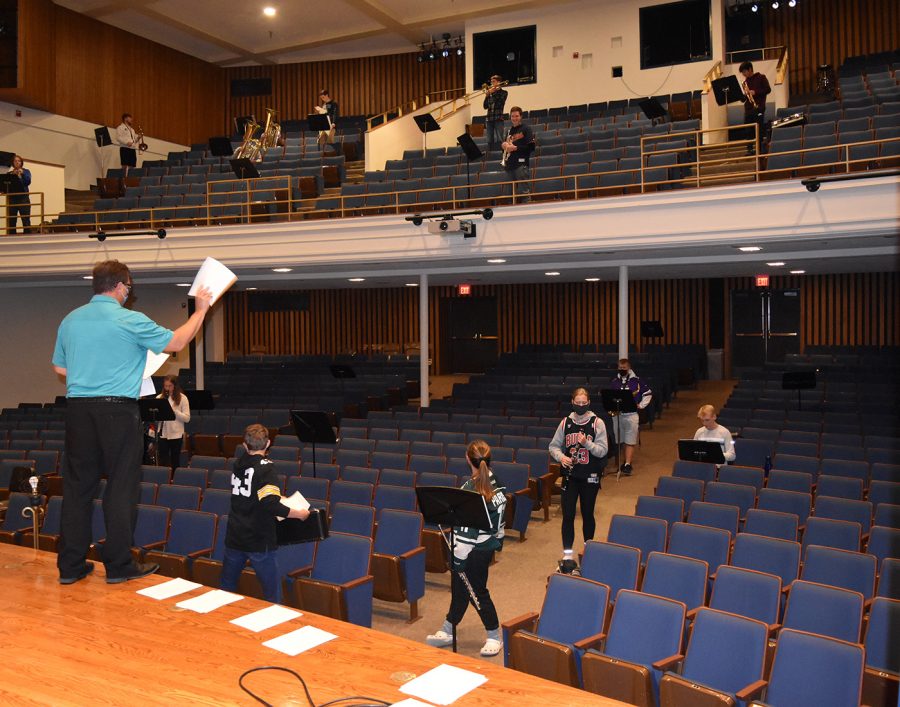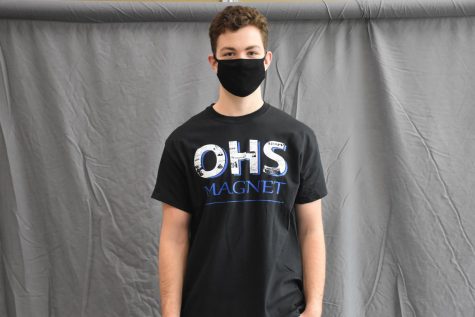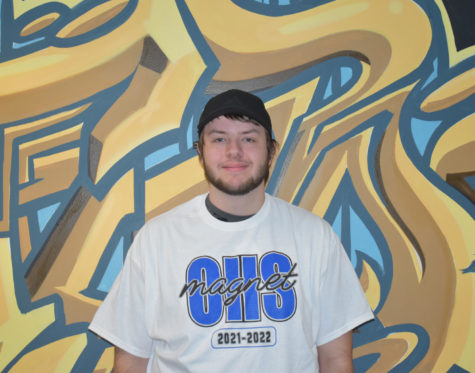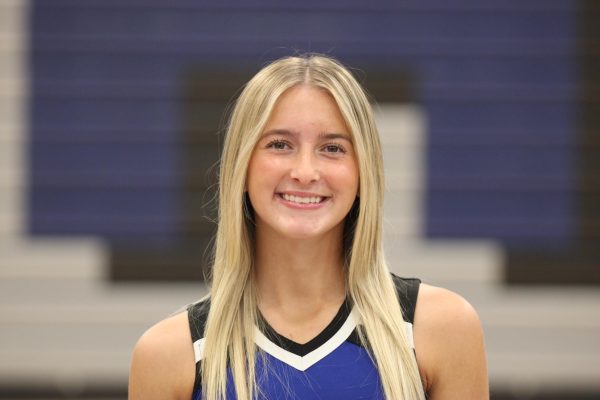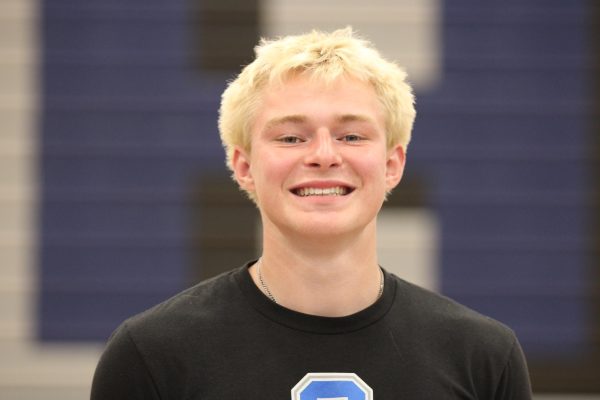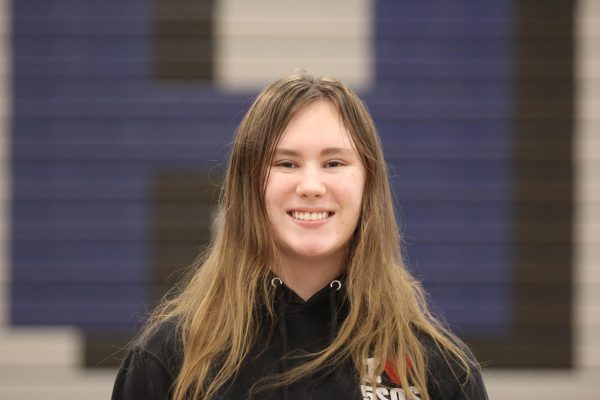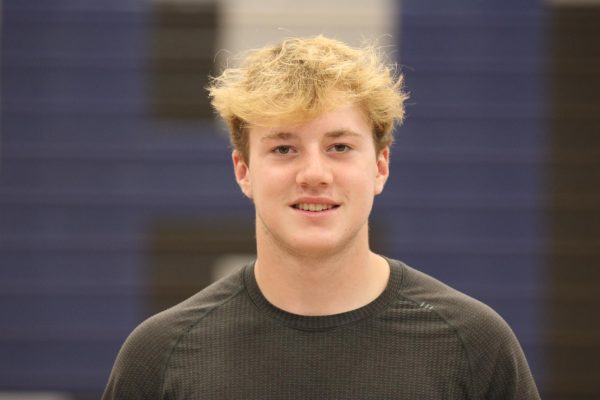COVID-19: The lasting impact
Mr. Guenther directing the OHS concert band while maintaining strict social distance guidelines
October 1, 2020
Spring Shutdown
From an isolated breakout in the Chinese mainland, to a global pandemic that would soon swallow the entire world, the fate of millions would rest in the hands of few. According to the New York Times, On Dec. 31, the government in Wuhan, China, confirmed that health officials were treating dozens of cases related to an unknown respiratory illness. Just days later, researchers had identified a new strain of coronavirus that the world would come to know as COVID-19.
Almost a month later, on Jan. 20, 2020, this new disease would finally begin its overwhelmingly fatal and arduous strike on the American people. As those around the world grew more confused, more vulnerable and more exposed, COVID-19 grew into a Super-Spreader. According to World-O-Meters, the United States is currently home to over 21% of global coronavirus cases and climbing. As it currently sits, this pandemic has infected 7.2 million U.S. citizens, claiming the lives of over 200,000.
As time drew on, Governor Tim Walz and the Minnesota Department of Health would be faced with one of the most consequential decisions of this pandemic, what to do with schools. School closures on March, 18 last spring is one thing, but the decision on the upcoming 2020-21 school year would be far more monumental in terms of its lasting impact.
Summer Planning
Looking back to the months of May and June, the Owatonna Public School District knew a regular schedule wasn’t probable in order to keep students and staff safe. However, the prospect of a hybrid model was not only intriguing, but foreseeable. The communication process between state officials and school districts during the summer months was frustrating at times, Principal Mr. Kory Kath said, “It was tough sometimes because we were kind of anticipating, and we felt as though the state would probably give us a specific statement of this is what everyone is going to do.” Instead, the Minnesota Department of Education adopted a tiered approach to combating the spread of COVID-19. State government, MDH and MDE in particular, devised a criteria for districts to follow. This criteria would determine what sort of year students would see, based on statistics unique to each county.
The MDH formula states that in order to resume school on a normal schedule, Steele County needed fewer than 10 new coronavirus cases per 10,000 residents, over a two week span. A number that is quite low. Over the past few months, Steele County has been hovering between 12 and 19 new cases per 10,000 residents, making the choice for following a hybrid model fairly obvious. That being said, Principal Kath and district members wanted to do their due diligence when making a decision such as this. Principal Kath said, “I talked to a bunch of students, as well as families, to see how they were feeling about starting a hybrid model in the fall. Because if our community wasn’t ready for that, we wouldn’t have wanted to do it. What we started to understand from families though, is that if there is a way to do it safely, they want to be back and have that in-person contact with staff.” From this point forward, Superintendent Elstad, the School Board and Director of Teaching and Learning, started to put together a plan that would make the hybrid model a safe and viable option.
In the later parts of July and August, Steele County public health provided guidelines that the OHS must follow. The requirements are as stated: Drinking fountains are unavailable, hallway markers are present to help direct traffic, every student and staff member must wear a face mask at all times, teachers must disinfect all desks, tables and chairs before every class period and social distance of six feet shall be implemented whenever possible. There is no guaranteed way of enforcing the social distancing rules, Principal Kath said, “From here it’s the concept of educating our students to the best of our abilities.”
Students and Staff Return to OHS
Starting Sept. 2, the beginning of this academic school year has felt anything but normal. The current hybrid model operates with two student body groups. Group One attends school on Monday and Tuesday, Group Two attends school on Thursday and Friday, with Wednesday being an exclusively virtual learning day. Students and families who didn’t feel comfortable opting for this hybrid model are able to remain at home for entirely online-based learning- continuing in their current classes.

While this hybrid model may be the safest option, for now, it doesn’t come without challenges. It can be difficult for students, as well as teachers, to juggle the complexity of a split schedule. Freshman Adelyn Quaintance, a Group One student, talked about distance learning days. She said, “There are flaws that could be worked out and teachers could be more involved when we need help. It’s kind of confusing sometimes when we have to learn a whole lesson by ourselves.” That being said, hybrid perspectives can vary greatly between students. Junior Mason Zirngible said, “Hybrid learning is good because you get to take your time and work at your own pace online, then touch base with teachers in person and work out any kinks.”
OHS is required to give constant safety updates to the Minnesota Department of Health, Principal Kath said, “Directly I am checking in daily with the school nurse, who is in contact with the district nurse, who then gives weekly reports to the Steele County Public Health.” Following this chain of command, it would be Steele County Public Health who will then report on a state level.
Athletes Return to Sports
One of the biggest anxiety points for students was the prospect of not being able to play their fall sport. The Minnesota State High School League (MSHSL) decided to air on the side of caution ealy on, pushing back football and volleyball to a spring season. Reason being, football is a huge attractor in terms of fans, and volleyball is indoors. Other sports such as cross-country, soccer and swimming, the MSHSL felt could operate safely and are currently in the midst of their seasons. Even in the face of COVID-19 the MSHSL continues to be a student athletes biggest advocate. This past week they were able to put up a second vote that would allow football and volleyball a shot at returning their seasons to the year 2020. On Monday, Sept. 21, the board of commissioners voted 15-3 reinstate the two sports to the fall season. The start date for both will be Sept. 28. Despite the pleasing news, fall sports will continue operating safely. This means limiting the number of spectators, doing away with concessions and following sanitary, social distance rules.
Future Plans
Looking ahead to the coming months, the future of school schedules is fairly unclear. Principal Kath was certain that the hybrid model will continue through quarter one, at which point Owatonna Public Schools will reassess how many new cases per 10,000 residents Steele county falls under. If students do happen to resume a normal, in person schedule, face masks and safety procedures will continue to be implemented. According to Doctor Anthony Fauci and the CDC, a vaccine won’t eliminate the need for a face mask. People can potentially expect the use of personal protective equipment to last months after the vaccine is available.

